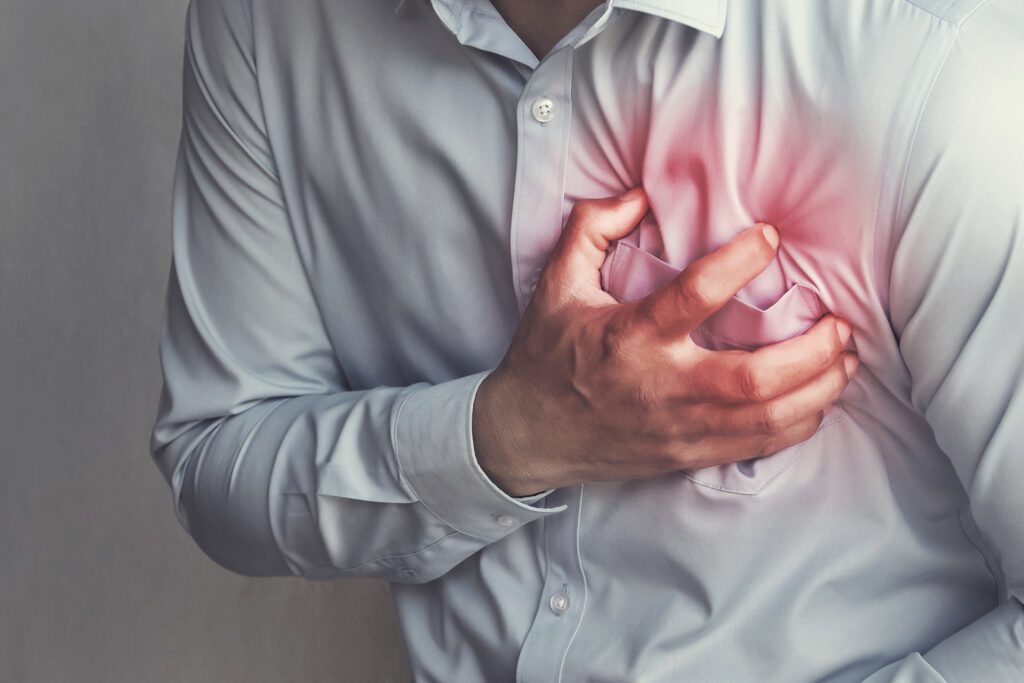Did you know that of the millions of Americans who visit the emergency room with chest every year, only 20 percent are actually diagnosed with a heart attack or other serious heart condition—like unstable angina—and the other 80 percent are suffering with something different? While some instances of chest pain that are unrelated to a heart attack are life-threatening, most instances of chest pain are related to something that’s not life-threatening. Take our quiz and learn about the signs of a heart attack and other maladies that can be the cause of chest pains.
1.) What is the best course of action if you genuinely feel you are suffering from a heart attack?
- Wait and see if it gets better.
- Google your symptoms.
- Call 911 to take an ambulance to a hospital.
- Make a doctor’s appointment.
2.) True or False? Different people experience different symptoms when experiencing a heart attack.
3.) Since chest pain isn’t generally the only symptom of a heart attack, what are the other symptoms that you could experience?
- Uncomfortable pressure, squeezing, fullness, burning, tightness, or pain in the center of the chest.
- Pain, numbness, pinching, prickling, or other uncomfortable sensations in one or both arms, the back, neck, jaw, or stomach.
- Shortness of breath, lightheadedness or dizziness, unusual fatigue, sudden heaviness, weakness, or aching in one or both arms.
- Sudden nausea or vomiting, heat/flushing or a cold sweat.
- All of the above.
4.) What is the definition of angina?
- When part of the heart isn’t getting as much oxygen-rich blood as it needs during periods of physical exertion or emotional stress.
- A heart spasm.
- An abnormal heartbeat caused by stress or injury.
- None of the above.
5.) What other maladies could cause chest pain similar to that of a heart attack?
- A pulmonary embolism, a blood clot in the lungs that constitutes a medical emergency.
- An aortic dissection, a tear in the inner layer of the aorta that can be life-threatening.
- Illnesses like pancreatitis, pneumonia, indigestion, etc.
- Mental conditions like a panic attack.
- All of the above.
6.) Which is most likely to be symptoms of a heart attack, A or B?
- Sensation of pain, or of pressure, tightness, squeezing, or burning.
- Sharp or knifelike pain brought on by breathing or coughing.
7.) Which is most likely to be symptoms of a heart attack, A or B?
- Sudden stabbing pain that lasts only a few seconds.
- Gradual onset of pain over the course of a few minutes.
8.) Which is most likely to be symptoms of a heart attack, A or B?
- Pain distinctly on one side of the body or the other.
- Pain in a diffuse area, including a constant pain in the middle of the chest.
9.) Which is most likely to be symptoms of a heart attack, A or B?
- Pain that extends to the left arm, neck, jaw, or back.
- Pain that is localized to one small spot.
10.) Which is most likely to be a symptom of a heart attack, A or B?
- Pain or pressure that appears during or after physical exertion or emotional stress (heart attack) or while you are at rest (unstable angina).
- Pain reproduced by pressing on the chest or with body motion.
compiled by ERIKA ALDRICH / Information provided by Harvard Health
ANSWERS:
- C. Call 911 to take an ambulance to a hospital. If you think you are having a heart attack, it’s better to be safe than sorry.
- True. Symptoms for a heart attack are not universal.
- E. All of the above. There is a range of symptoms that indicate a heart attack.
- A. When part of the heart isn’t getting as much oxygen-rich blood as it needs during periods of physical exertion or emotional stress.
- E. All of the above.
- A. Sensation of pain, or of pressure, tightness, squeezing, or burning.
- B. Gradual onset of pain over the course of a few minutes.
- B. Pain in a diffuse area, including a constant pain in the middle of the chest.
- A. Pain that extends to the left arm, neck, jaw, or back.
- A. Pain or pressure that appears during or after physical exertion or emotional stress (heart attack) or while you are at rest (unstable angina).
